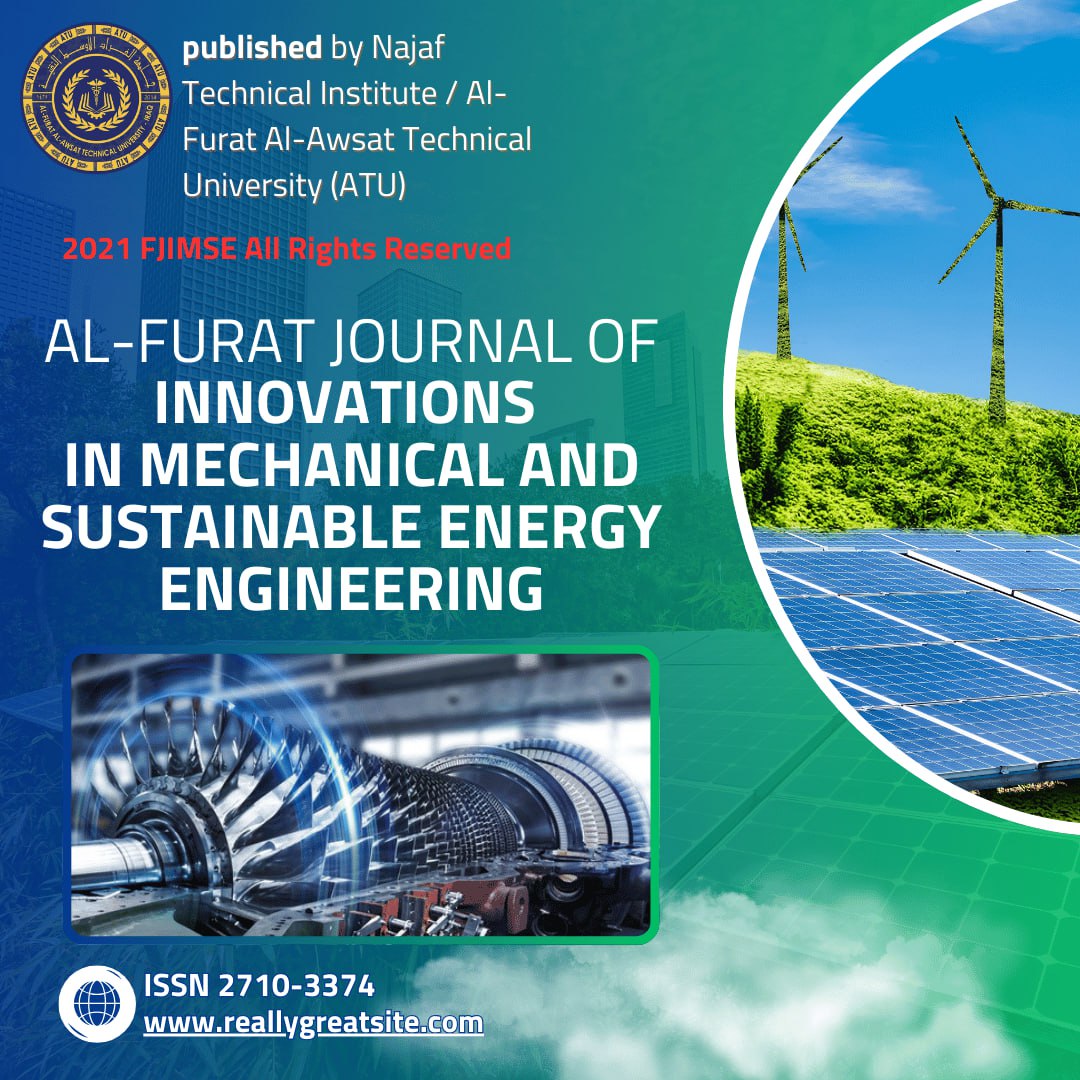EXPERIMENTAL STUDY TO IMPROVE THE PERFORMANCE OF DOUBLE PASS SOLAR AIR HEATER BY USING DIFFERENT NANO-MATERIALS
DOI:
https://doi.org/10.52262/awfefa24Keywords:
Nanomaterials, Solar energy, Thermal efficiencyAbstract
Solar energy is used to heat air, which is then used in greenhouses and to dry crops. Solar air heaters (SAHs) can be made more efficient by employing a new design for the aluminum absorber plate. This solar air heater was compared against a flat absorber plate coated in black paint mixed with titanium oxide (TiO₂), aluminum oxide (Al₂O₃), and copper oxide (CuO) at a 3% concentration. It can help with continuous attempts to improve thermal efficiency and convective heat transfer. This study's analysis is based on experimental data, in which the performance of a double-pass solar air heater design was tested in three examples boosted with nanomaterials at air mass flow rates ranging from 0.05 kg/s to 0.035 kg/s. Based on the findings of the experiments, using nanomaterials containing 3% copper oxide (CuO) is the best instance, with a maximum efficiency of 60.1% at a mass flow rate of 0.05 kg/s. The thermal efficiency of 3% copper oxide ranged from 27.6% to 60.1%, titanium oxide from 30.2% to 55.5%, and aluminum oxide from 30.1% to 55.8%, respectively. When copper oxide was used instead of aluminum oxide, the efficiency increased by 4.6%, whereas titanium oxide increased by 4.3%.
Published
Issue
Section
License
Copyright (c) 2025 Al-Furat Journal of Innovations in Mechanical and Sustainable Energy Engineering

This work is licensed under a Creative Commons Attribution-NonCommercial-NoDerivatives 4.0 International License.




